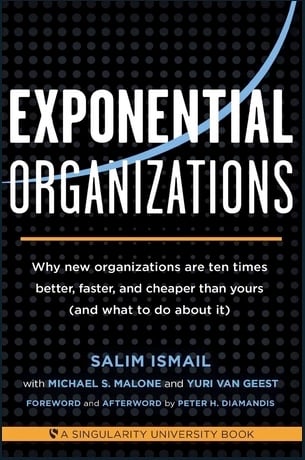For decades, the SWOT analysis was the go-to framework for strategic planning. Simple. Familiar. Accessible. But in a world moving at the speed of disruption, is SWOT still fit for purpose?
Short answer — not really.
Now for the million-dollar question. Is it time to retire the old checklist and embrace a smarter, more adaptive way to think strategically? Can we as leaders even imagine an era without SWOT? And how do we even get started without losing sight of the results that matter most?
Welcome to the era of the Strategic Radar — built for complexity, time sensitivity, and decision-making that actually drives change.
Data: 83% of strategies fail due to faulty assumptions. (Gartner)
Insight: If your workflows are stuck in the past, your assumptions probably are too — and that’s where good strategy goes to die.
What’s the step change: Shift from static to dynamic sensing with the Strategic Radar — so you're making moves based on what’s actually happening, not what you hoped was true.
Why SWOT Is Dead (Or Should Be)
It’s not that SWOT was wrong — it’s just no longer enough. Here’s what’s holding it (and businesses that rely on it) back:
- It’s become a tick-the-box exercise
SWOT often shows up in off-sites as a filler activity. Teams throw in generic inputs (“our people,” “the economy”), and move on. No prioritisation. No insight. No action. - It treats all factors equally
A minor internal weakness sits next to a major market disruption. There’s no scale, urgency, or weight — just a long list of things that don’t point to a clear direction. - It’s static, not dynamic
SWOT captures a moment in time. But the world keeps changing. Strategy can’t be a once-a-year snapshot — it needs to move. - It lacks a sense of timing
Most SWOTs fail to distinguish between what’s urgent now vs. what’s on the horizon. That means leaders often miss the signals that matter most.
In today’s world, that’s a strategic blind spot you can’t afford. So what system works?
What Is the Strategic Radar?

The Strategic Radar is a next-gen planning tool designed for real-world complexity and change. The purpose? To align your team on what’s happening, what’s coming, and what you need to do about it — all in one place.
Think of it as a single-page visual map that lays out your internal and external drivers across three time horizons:
- Now – What’s already in motion or must be addressed immediately.
- Next – Signals emerging in the next 1,000 days.
- Later – Trends that will shape your 3–7 year outlook.
Alongside it, use the Disruption Drivers — an evolving, curated list of 30+ potential shake-ups across business, society, and tech that could rattle your industry (and your strategy). Got niche-specific threats? Toss those in too to make it yours and start filling out your map.
Unlike SWOT, the Radar doesn’t just describe the landscape — it gives you a living map to make sense of it. This is how we help businesses and leaders cut through the noise, focus on what matters, and make strategy a living process.
READ: 3 Ways To Prepare Your Business For Disruption (Disruption Drivers Download)
How to Use the Strategic Radar
Step 1. Scan for change
Anchored by your purpose, start by identifying key drivers and disruptors inside and outside your business.
- Quadrants 1 & 2 cover what’s happening out there — market shifts, competitors, consumer trends, and environmental forces.
- Quadrant 3 is your innovation zone — internal strengths and opportunities you can actually use.
- Quadrant 4 is where things get sticky — internal blockers like budget, bandwidth, skills, or alignment that can stall your strategy.
Step 2. Map by time horizon
Place each factor into Now, Next, or Later.
Are they critical in the next 1,000 days? Which shifts are brewing in the next 3-7 years that you get a head start on? And is there anything beyond that that you should be keeping an eye on.
This forces clarity. You’ll quickly see where you’re underprepared, over-focused, or blind to emerging risks and opportunities.
Step 3. Align your team
Use the Radar as a conversation tool. It gives everyone the same page — literally — so you can debate priorities, spot blind spots, and make faster decisions.
Step 4. Revisit regularly
This isn’t a one-and-done document. The Radar is meant to evolve. As the environment shifts, so should your strategy.
Why It Works: Next Horizon Thinking
At the heart of the Strategic Radar is the mindset of Next Horizon Thinking — the ability to see what’s coming, sift what matters, and stay adaptive through testing and response (not just waiting and reacting).
Here’s why it works:
✅ Time-lensed: Helps you think across short-, medium-, and long-term horizons
✅ Prioritised: Filters noise and brings focus to what’s most critical
✅ Visual: A one-page map that’s easy to use and share
✅ Dynamic: Built to evolve with your context
✅ Actionable: Drives strategic decisions, not just analysis
Because strategy isn’t a document — it’s a decision-making edge.
Tying It Together
They say the best way to predict the future is to create it — and that’s exactly what Next Horizon Thinking and the Strategic Radar is all about.
If SWOT was built for a simpler time, the Strategic Radar is built for this one — where disruption is constant, complexity is the norm, and clarity is your competitive edge.
When we say SWOT is dead, it’s not about throwing out the old for a gimmick. It’s about upgrading your toolkit so you can set your business and teams up for success..
SWOT is static. The world isn’t.
Ready to build your radar?
See what's coming before it hits and set your business up for real, long-term success with marketing and strategy that delivers from the top line to the bottom line.
Give your business the Complete Step Change it deserves today.
Editor’s note: This article has been updated for freshness and relevance.
Featured photo by Freddy Marschall on Unsplash.















